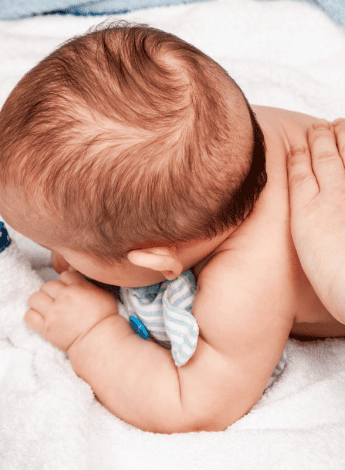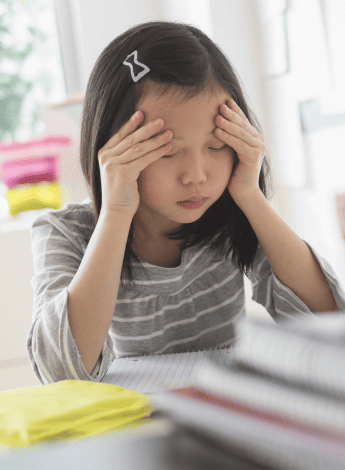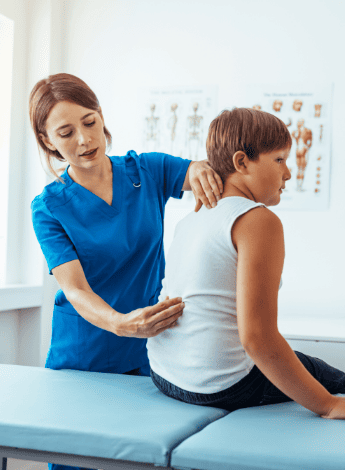
Five facts about physiotherapy and the paediatric spine

Nicole Pates, Dr Nikki Milne, Dr Jenifer Dice and Anita Gross present five discussion points about paediatric spinal conditions and consider whether spinal manipulation and mobilisation are ever appropriate for this population.
1 Spinal manipulation should not be performed on infants

Physiotherapists are commonly involved in the assessment and management of infants, children and adolescents diagnosed with conditions affecting the spine.
Two World Physiotherapy specialty groups—the International Organisation of Physiotherapists in Paediatrics and the International Federation of Manual and Musculoskeletal Physical Therapists—recently released a joint evidence-based position statement on the use of spinal manipulation and mobilisation in paediatric populations with a diverse range of conditions (Gross et al 2024).
Their Taskforce on Paediatric Spinal Manipulation states that spinal manipulation and mobilisation should not be performed on infants for any reason (Gross et al 2024), including while managing conditions such as congenital muscular torticollis, a postural deformity of the neck affecting four to 16 per cent of newborns (Kaplan et al 2018).
The immature, developing nature of the infant spine predisposes it to injury (Lustrin et al 2003) and moderate to severe adverse events have resulted from spinal manipulation of infants previously (Milne et al 2022).
The most recent clinical practice guidelines on congenital muscular torticollis (Sargent et al 2024) recommend using the CMT Severity Grading Scale to inform treatment.
First-line treatment recommendations include passive range of motion of the neck with a focus on stretching the sternocleidomastoid muscle when passive range of motion is limited, neck and trunk active range of motion, the development of symmetrical movement patterns, environmental adaptations to encourage neck rotation to the non-preferred side, parent/carer education and referral to primary medical care provider if indicated by systems review or when infant is not progressing as anticipated (Sargent et al 2024).
2 Manual therapy helps some adult headaches but the evidence is inconclusive for children

Primary headaches, encompassing tension-type headache and migraine, are the most prevalent neurological conditions affecting children and adolescents (Adachi et al 2024).
A synthesis of 64 cross-sectional epidemiological studies, conducted between 1988 and 2013 and involving 227,249 children and adolescents, revealed an average headache prevalence of 54.4 per cent, with a 9.1 per cent mean prevalence of migraine (Wober-Bingol 2013).
The management of primary headaches in children and adolescents necessitates a multifaceted, interdisciplinary and biopsychosocial approach.
Manual therapy has been well documented as effective for the management of headache intensity, frequency and duration and quality of life for adults with tension-type headache (Jung et al 2022, Repiso-Guardeno et al 2023) but what about children?
The evidence is inconclusive. Spinal manipulation and mobilisation for adolescents and spinal mobilisation for children may be appropriate for treating musculoskeletal conditions including spinal mobility impairments associated with neck–back pain and neck pain with headache; however, there is no high-certainty evidence available to recommend these techniques (Gross et al 2024).
Physiotherapists should classify the headache correctly, determine which outcome measure is of interest to the child and family, and ensure that care is tailored to the family’s values, culture, preferences and resources (Langdon & DiSabella 2017, World Health Organization 2020).
3 Adolescent idiopathic scoliosis does not benefit from spinal manipulation

Idiopathic scoliosis affects approximately four per cent of children and the most common type is adolescent idiopathic scoliosis (AIS) (Al-Saadi & Dakhil-Jerew 2021).
AIS is a three-dimensional structural deformity of the spinal column that largely affects children and adolescents during their growth spurts and approximately 10 per cent of those with AIS develop a more aggressive deformity requiring focused treatment (Danielsson et al 2001).
Fulltime rigid bracing is considered most effective for managing moderate-grade AIS (Scoliosis Research Society 2024, Negrini et al 2018).
However, tolerance of full-time bracing is challenging for some children and adolescents and alternate treatment protocols such as exercises and night-time bracing with daytime physical activity have been investigated.
A recently published randomised controlled trial with long-term follow-up in Sweden (Charalampidis et al 2024) demonstrated that for children and adolescents (nine to 17 years) with previously untreated AIS (Cobb angle 25–40 degrees) and at least one year of growth remaining, night-time bracing with self-mediated physical activity was effective in preventing Cobb angle progression in 76 per cent of those refusing full-time bracing, whereas low-dose scoliosis-specific exercise was shown to have little to no benefit over general physical activity.
The Taskforce on Paediatric Manipulation does not recommend the use of spinal manipulation or mobilisation for the correction of AIS—there is no conclusive evidence of positive effects and there is evidence of mild adverse events associated with manipulation for AIS (Gross et al 2024).
4 Spinal mobilisation and manipulation could be used sparingly for neck and back pain

Spinal mobilisation may be appropriate (with sound clinical reasoning) for children and adolescents with spinal mobility impairments associated with neck–back pain, segmental hypomobility, segmental joint pain, muscle/myofascial pain or muscle/myofascial stiffness across all spinal levels (Gross et al 2024).
Manipulation may be appropriate (with sound clinical reasoning) for adolescents and children with joint hypomobility or pain in the thoracic spine.
Experts identified the importance of informed caregiver consent and patient assent before using these techniques (Dice et al 2024a).
Caregivers should be made aware of the potential risks and that there is no high-certainty evidence available to recommend these treatments (Gross et al 2024).
Among adults, the risks of spinal manipulative therapy span from soreness to fracture and spinal cord injury (Nielsen et al 2017).
There is little known about the incidence of harm in paediatric populations due to poor reporting (Milne et al 2022) and much less about the potential impact on immature musculoskeletal systems.
Spinal manipulation and mobilisation could be used sparingly when other evidence-based options are not available and with full transparency about potential harms during shared decision-making processes. Any adverse events should be documented and considered prior to repeated treatments.
5 Spinal manipulation is not recommended for non-musculoskeletal conditions

In some regions around the world and in some professions, infants, children and adolescents with a variety of non-musculoskeletal conditions are treated with spinal manipulation or mobilisation (Côté et al 2021, Milne et al 2022).
While this is not common practice by Australian physiotherapists, it’s worth clarifying the evidence (or lack of evidence) regarding the use of spinal manipulation or mobilisation for managing these conditions.
There is strong evidence that spinal manipulation has no significant effect on impairments of asthma and nocturnal enuresis (Milne et al 2022) and inconclusive evidence regarding its use for managing impairments related to autism, breastfeeding difficulties, cerebral palsy, infantile colic or otitis media (Milne et al 2022).
An international Delphi panel of expert physiotherapists (Dice et al 2024b) either reached consensus that spinal mobilisation and manipulation were not appropriate (breastfeeding difficulties), did not identify the condition as one to be considered (otitis media, nocturnal enuresis and attention deficit hyperactivity disorder) or lacked consensus on appropriateness (asthma/respiratory impairments, neurodevelopmental
disorders, cerebral palsy and infantile colic).
For the non-musculoskeletal conditions where the Delphi panel lacked consensus, the Taskforce on Paediatric Manipulation (Gross et al 2024) made the determination of not recommended due to lack of neurophysiological and biomechanical plausibility.
>>Nicole Pates MACP is the national chair of the APA Paediatric group and an APA Titled Paediatric Physiotherapist. She is deeply committed to advocating for the role of physiotherapy in paediatric healthcare. Nicole works in private practice, leading a multidisciplinary team and ensuring comprehensive care for children and families.
>>Dr Nikki Milne APAM is an associate professor of physiotherapy (paediatrics) and assistant dean of research at Bond University on the Gold Coast. Nikki has a special interest in child health, learning and paediatric physiotherapy and is passionate about the inclusion of an evidence-informed paediatric curriculum in entry-level physiotherapy programs.
>>Dr Jenifer Dice is an assistant professor in the Doctor of Physical Therapy program at Texas Woman’s University, USA. Jenifer has more than 20 years of experience in private outpatient paediatric physiotherapy and continues to practise in this field.
>>Anita Gross is an associate clinical professor at McMaster University, Canada. Anita is the chair of the Paediatric Taskforce on Spinal Manipulation, coordinates the Cervical Overview Group research network and participates in randomised clinical trials on back pain. She is a clinician–scientist, educator and Fellow of the Canadian Academy of Manipulative Physiotherapy.
Quick links:
Course of interest:
© Copyright 2025 by Australian Physiotherapy Association. All rights reserved.





